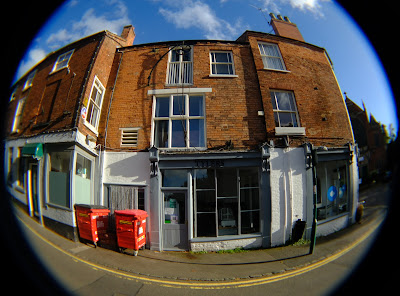I get bored very easily with "standard" photography. While it is great to get that iconic photo of a landscape, after a while I tend to go to any technique that differentiates an image, be it ICM, different angles, etc. This is one reason I am always looking for lens that are different, quirky or just weird.
This is also one reason why I am generally banned from going into charity shops by my wife. Apart from my predilection to buy books, I am always on the lookout for old camera equipment. This is even less likely than finding decent books, but secretly you hope to uncover a Leica, which the fool at the checkout has priced for £2.50. However, failing that, I am always a sucker for old lenses, but again I never had much success.
However, recently I was perusing a local charity shops while my wife was otherwise distracted taking the dog to the vet. After discarding the usual Dan Brown's, I found 2 lenses in the corner of the shop. One was an old Tamron zoom which did not hold much interest, but the 2nd one was more intriguing. At 1st glance it looked like the front end of a CCTV camera, and I could not decide whether it was worth a punt. At this point I was saved by the bell in the form of a call from my wife asking to be picked up, so I put it down and went home.
However, the next day, I could not stop thinking about it, so I snuck out at lunchtime and picked it up. for the ridiculous price of 10 quid.
When I got it home, I googled it, but I was no more the wiser.
It was clearly some sort of wide angle/fisheye, made by AICO in Japan, but it did not seem to have any sort of mount, not even a screw in M42. It had a screw that looked like it would fit into a filter mount, but it was not quite the right size.
The mystery was eventually solved when we found information on Series VII adapters. These were a class of filters and lenses that could screw on to the front of an existing lens to add extra reach or wide-angle capabilities.
To try it out, I got a 50mm to Series VII converter and attached it to the front of a 18-55 zoom. Obviously the lens itself has no aperture control, or focussing. However, being a fisheye, it does not need much focussing anyway
The Results
I have never had a true fisheye before, so I was a bit surprised by the initial results. Rather than a full image, the lens only created a port hole effect, having a circular image. It was a bit like the effect of using one of those crystal balls, without the need to find where to place it on the ground. Looking at other fisheye, this seems pretty standard. Of course being attached on a zoom I could decide how much of an effect to have by zooming into, so magnifying a certain area, but I actually liked the effect in certain scenarios.
One issue was really bad flare, and it was best when no strong lights were being picked up. However, it was really good for pictures of streets where the fisheye effect showed up most strongly. It will be interesting to see the results I will get in say a forest environment
Conclusion
Buying an old lens is not about photography perfection, but breaking the mold. Photography should be about pushing the limits, and playing with different pieces of glass helps push us in different directions. While the lens may not get used much, there will always be a project or use that will come around, which we will dig it out. For that alone it is £10 well spent







